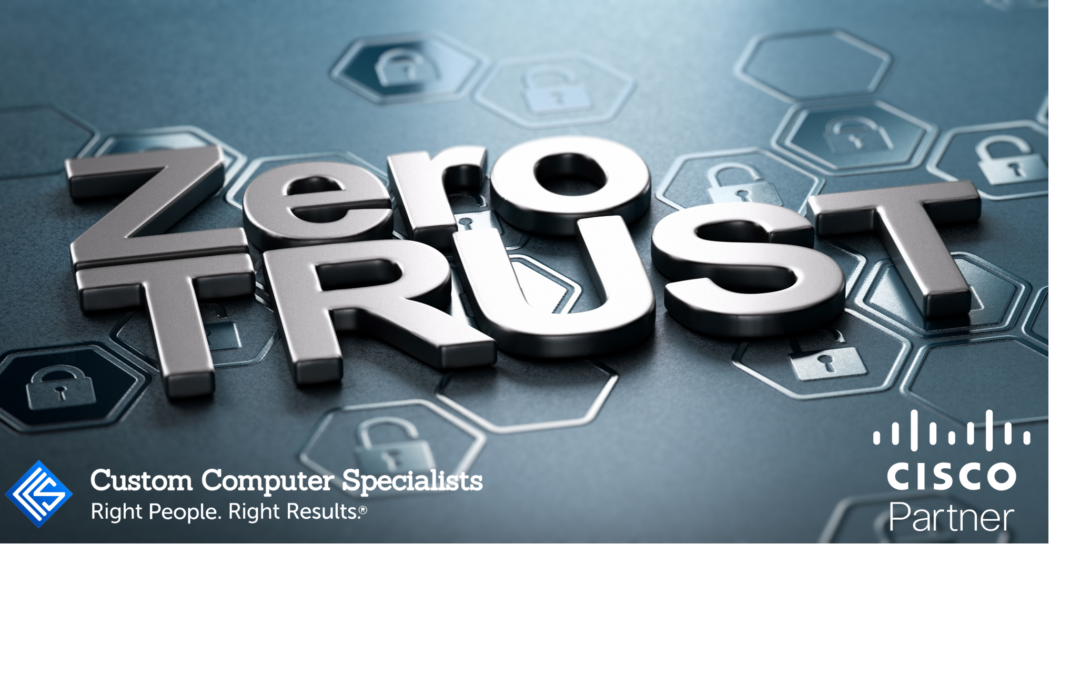Zero Trust Networks: What Are They?
The internet has brought a world of opportunity for businesses. It is easy for companies to reach out to consumers and offer them products or services without a physical storefront. However, this also opens businesses up to the risk of data breaches and cyber attacks. Cyber attacks can be costly, and data breaches can damage your business’s reputation.
To protect your business, you need to be aware of the risks and take steps to mitigate them. Cyber insurance can help cover the costs of a data breach or cyber-attack, and a cyber security plan can help you protect your business from these threats.
By taking these steps, you can help ensure that your business is protected from the risks of operating online.
There is no one-size-fits-all solution for determining whether you should implement zero-trust network access in your organization. Instead, the best way to decide whether this security model is suitable for you depends on the level of risk your business faces and the type of data you store on your network.
For businesses dealing with highly sensitive or proprietary information, implementing zero trust is a must. Without strict controls, there is a significant risk that your information could fall into the wrong hands and be used for malicious purposes. Furthermore, the increased regulatory requirements and cyber threats facing businesses today mean that protecting sensitive data must be a top priority if you want to avoid costly fines and reputation damage.
On the other hand, if your business doesn’t handle any sensitive or proprietary data, zero-trust may not be as critical to securing your network. However, implementing zero trust can still help protect against common threats like phishing scams and malware attacks, even in these cases. Furthermore, limiting access to less important or lower-risk assets on your network can help ensure that your most valuable data remains secure even if there is a breach elsewhere on the network. Ultimately, whether or not to implement zero-trust network access should be based on the unique needs and risks of your organization.
If you are considering implementing zero trust in your organization, there are a few things to keep in mind.
- First, zero trust is not a silver bullet that will magically make your network impenetrable. It is important to remember that no security measure is 100% effective and that zero trust should be just one part of a comprehensive security strategy.
- Second, zero trust requires a significant investment of time and resources to implement correctly. To be effective, zero trust must be integrated into every aspect of your network, from your infrastructure and applications to your end-users and devices.
- Finally, it is essential to remember that a zero-trust network is a constantly evolving entity. Your security measures will need to be updated as new threats emerge and your network changes over time.
If you are looking for a way to improve the security of your network, zero trust may be the right solution for you. By taking steps to limit access and protect your data, you can help ensure that your business is protected from cyber-attacks.

What Is Zero Trust Network Access?
At its core, a zero-trust network access policy is all about limiting access to sensitive data based on the security of a given endpoint. This means that if an endpoint cannot be verified, it won’t have access to any critical or confidential information on the network. By limiting access in this way, zero-trust policies help to protect against threats and keep data secure. They also ensure that only authorized and authenticated users can use and connect to services on their devices or computers. Overall, a zero-trust network access policy is essential for businesses looking to protect their most sensitive information and maintain their digital integrity.
Any effective security policy must consider the fact that employees are the weak link in the security chain. No matter how strong your technical defenses are, they can be easily circumvented if an employee accidentally discloses sensitive data. That’s why it’s crucial to have a policy that limits user access based on the trust level. By only allowing users to access the data they need to do their jobs, you can reduce the chances of accidental disclosure. And by requiring users to log into the system with a unique username and password, you can ensure that only authorized users are accessing the data. You can help protect your company’s sensitive data from accidental disclosure by taking these steps.
Why Zero Trust Networks Are Crucial For Today’s Business
A zero-trust network is a critical component of any business. By creating this secure and reliable system, companies can ensure that their employees have the tools and information they need to do their jobs efficiently, without the risk of malicious acts or cyber attacks. This promotes a healthy work environment, but it also reduces the overall risk for the company as a whole.
With a zero-trust network in place, companies can grant much more flexibility and access to individuals within their organizations. These employees can then use applications and other resources designed specifically for their particular roles, increasing productivity and efficiency. Moreover, by giving certain employees far more flexibility than others within the same organization, companies can achieve new levels of collaboration while still protecting sensitive data from prying eyes.
Overall, a zero-trust network is essential for any business that wants to create an effective and safe working environment for its employees. By empowering these individuals with access to valuable resources while at the same time limiting their ability to make mistakes or act maliciously, businesses can reduce their risk and thrive in today’s fast-paced digital economy.
Zero Trust Policies
Zero-trust policies are vital for organizations that want to stay protected against cybersecurity threats. These policies take a proactive approach, actively monitoring and restricting access to data regardless of where the user is coming from or what device they are using. And the benefits of these policies speak for themselves: businesses that have implemented zero-trust policies have been able to significantly reduce the risk of cyber-attacks while maintaining high levels of data transfer speeds and productivity throughout their organization.
But what does the future hold for zero-trust policies? According to recent research carried out by Microsoft, nearly all security decision-makers believe that zero-trust is critical to business success in today’s digital world. This suggests that zero-trust will continue to be on the rise in the years ahead, offering organizations unparalleled protection against cyber threats without compromising speed or efficiency. In a landscape where data breaches seem more common than ever, embracing zero trust may be one of the most effective ways to keep companies safe and secure in our increasingly digitized world.
Any business that handles sensitive customer data needs to have a zero-trust network access policy. This policy ensures that only authorized users can access the network and that all data passing through the network is encrypted. The benefits of a zero-trust network are manifold. It reduces the risk of data breaches, improves productivity and engagement, and cuts costs for businesses. For employees, it increases job satisfaction and peace of mind. In today’s increasingly interconnected world, a zero-trust network access policy is essential for any business that wants to protect its data and reputation.
The Overall Benefits Of Zero Trust Networks
Protection For Your Remote Workforce
A zero-trust network is an excellent way to secure your remote workforce. Many companies don’t take the time to think about their remote staff’s level of access. This can lead to a dangerous situation where employees have full access to an asset they shouldn’t.
A zero-trust network addresses this issue in a few different ways. First, you can create different user access levels depending on an individual’s level of access. This can help give teams clear guidelines for what each remote worker can do. For example, if an employee only needs to access files on a specific server, they should only be given access to that server and no others. By contrast, if an employee needs to be able to access multiple servers, they should be given appropriate levels of access to those servers. This system of user access levels helps ensure that each remote worker only has the level of access they need and no more.
In addition, a zero-trust network can help improve communication between remote workers and the rest of the company. Often, communication breakdowns happen because employees feel like they are being left out of the loop or are not being given enough information. With a zero-trust network, this is less likely to happen. Instead of relying on outdated emails or documents, remote workers can be given access to a secure intranet where they can find the most up-to-date information. This helps ensure that everyone is on the same page, and it can improve communication throughout the company.
Data Breach Risk Lowered
A data breach is one of the biggest threats to businesses today. When someone gains unauthorized access to your network and obtains sensitive information from your server, they can use this information for malicious purposes, like identity theft or fraud.
However, a key benefit of having a zero-trust network is that it makes data breaches much harder. This is because strong security and access policies help you control who has access to what. You can also update these policies quickly if they become outdated or new threats emerge, which means that your network will always be protected against emerging vulnerabilities.
Therefore, by adopting a zero-trust policy and ensuring that your network is secure and protected, you can significantly reduce the risk of data breaches and protect your business against costly cyberattacks.
Keep Confidential Business Information Secure
Another key benefit of having a zero-trust network is that it can help protect your private business information. Many companies don’t take the time to think about their remote staff’s level of access. This can lead to a dangerous situation where employees have full access to an asset they shouldn’t.
A zero-trust network addresses this issue in a few different ways. First, you can create different user access levels depending on an individual’s level of access. This can help give teams clear guidelines for what each remote worker can do. Second, all data passing through the network is encrypted, so even if an unauthorized person were to gain access, they wouldn’t be able to read it. Finally, zero-trust networks are designed with security in mind from the ground up, so you can be confident that your data is safe.
Looking Ahead For Zero-Trust Networks
In today’s world, data security is more important than ever. With the rise of digital transformation, more and more businesses are moving their data online. This makes it easier for cybercriminals to target companies and steal sensitive information. A zero-trust network can help protect businesses against these threats by ensuring that only authorized users have access to sensitive data.
We can expect to see more businesses embrace zero-trust networks in the years ahead. As the world becomes more digitized, the need for these types of networks will only grow. Companies that want to protect their data and reputation need to take action now – before it’s too late. By embracing zero trust, businesses can stay one step ahead of cybercriminals and keep their data safe.
Secure Your Business Network
In today’s fast-paced business world, nearly every employee needs access to the company network. This makes it easy for employees to collaborate and stay on top of their work, posing some significant risks. With so many people accessing the network worldwide, there is a greater danger of data breaches and hacking attempts. To address these risks, many companies are beginning to implement zero-trust network access policies – a set of guidelines designed to limit the network access of remote employees and limit their potential for data breaches.
These policies typically involve a multi-step verification process that includes strict authentication protocols like two-factor authentication or biometric scanning. By requiring comprehensive verification each time someone logs in remotely, the zero-trust approach ensures that only authorized users have access to sensitive information within the company network. Not only does this help minimize the risk of data breaches, but it can also help businesses maintain higher security standards overall as they adapt and prepare for future threats. So if you’re looking for ways to improve your business’s cyber security practices, consider taking a page from this book and implementing zero-trust network access policies in your organization today.


Recent Comments